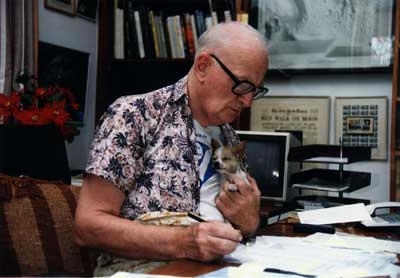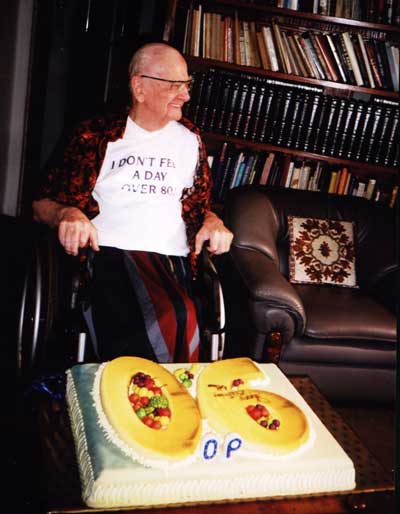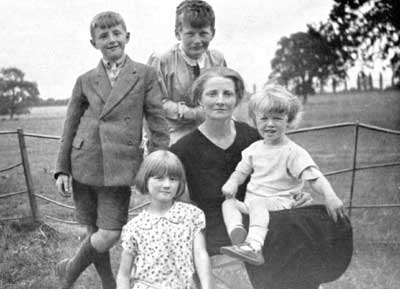
End of an odyssey
Sir Arthur C. Clarke made Sri Lanka his home for over 50 of his 90 years. I feel privileged to have known him for over 40 of those. He clearly inspired the careers of some of us, who became interested in astronomy and space. However, it was only after the Internet that I realized how many persons worldwide, most who had never met him, since he lived in the far distant exotic land called Sri Lanka, had been influenced deeply by his writings. Often when I met foreigners and told them I was from Sri Lanka, all that many of them knew about Sri Lanka was that it was home to Sir Arthur. He was by far the most famous ‘foreigner’ that made Sri Lanka known to the world. I first met him at a meeting of the Ceylon Astronomical Society which he founded in June 1959. He was its first President. During the ’60s he used to travel the world and bring back the latest news and pictures of space exploration which he shared with us at our monthly meetings held at the USIS. He had a great sense of humour. An interesting story circulated soon after the Moon landing in 1969. The Flat-Earth Society worried that they would be unable to explain the view of the earth as a globe, published a fantasy story in the TWA magazine saying that the Moon landing was staged by NASA with Arthur C. Clarke writing the screenplay. I can still remember Arthur being amused at being named the author. Over 20 years later the same fantasy was turned into a conspiracy theory and made famous by a TV programme. Observing the new interest, Arthur said he had sarcastically written to his good friend Dan Goldin, who was then the NASA Administrator and reminded him that he had never been paid royalties on the Hoax Moon Landing screenplay. He told me that NASA never replied his e-mail. Arthur is most famous for his suggestion to use geo-stationary satellites for global communication. The scientific paper was published in the October 1945 issue of "Wireless World" and became a reality in less than 20 years. The orbit 22,237 miles from the Earth's Equator has been officially named the Clarke Orbit. His first published story "Loophole" appeared in the April 1946 issue of the Pulp Magazine ‘Astounding Science Fiction’. Subsequent books like "Childhood's End" (1953), "City and the Stars" (1956) and "Rendezvous With Rama" (1973) created an enormous fan base. In his book "Fountains of Paradise" (1976) set in Lanka, he wrote of space elevators, a concept being seriously considered and supported by recent technological breakthroughs.
Filmed in 1968, Stanley Kubrick's and Arthur Clarke's ‘2001: A Space Odyssey’ won the Academy Award for Special Visual Effects. The film is 15th in the American Film Institute’s list of 100 Greatest Movies of All Time. I still remember seeing it at the Majestic theatre in 70mm and hope that it will be screened again, so that the younger generation has an opportunity to see this masterpiece. Arthur was particularly worried about the scene when Bowman goes through the vacuum of space to re-enter the spaceship Discovery. He knew that a person’s blood would boil, but decided according to medical opinion that 15 seconds would be safe. His strict adherence to be within scientific possibility made him the last of the Grand Masters of Science Fiction. Arthur not only made his home in Sri Lanka, he also adopted its lifestyle. I can remember being totally embarrassed to be in western attire when he arrived in smart national dress, to be witness at my wedding. I remember him commenting about the modern watches on the hands of those in full Kandyan regalia. For those of us who had an opportunity to meet him regularly he was a friend whom we could drop in on without any appointment and discuss life, the universe and everything. I remember very well an incident during one such visit. It must have been in the early 1970's since it was before he moved to his residence on Barnes Place. Arthur's mother had come from England and Arthur asked if I had seen his latest toy and went into his office to bring it out. I was left chatting with his mother who said, "Little things please little minds". Arthur was still her kid, refusing to grow up. Soon after, he returned with a plastic frame enclosing sand which did not mix completely and created striations like on a rock face. In Childhood's End published in 1953 before he visited Lanka he wrote "only a form of purified Buddhism--perhaps the most austere of all religions--still survived". A few years ago this was misquoted in the headline of an issue of the "Sinhala Bauddhaya" which mentioned Buddhagama. He was quick to point out that he was talking about the philosophy (Dhamma) and not the faith-based religion practised by a majority in Lanka. Arthur, a scientist did not have any need for religion. He left instructions that his funeral be completely secular. Arthur's 90th birthday was celebrated in grand style on December 16, 2007. Sadly it was to be his last. He will remain in the memory of all who were fortunate to know him and his enormous contributions to humanity will clearly be cherished forever. (The writer is an astrophysicist and President, Astronomical Association of Lanka) |
|
||||||
|| Front
Page | News | Editorial | Columns | Sports | Plus | Financial
Times | International | Mirror | TV
Times | Funday
Times || |
| |
Reproduction of articles permitted when used without any alterations to contents and a link to the source page.
|
© Copyright
2008 | Wijeya
Newspapers Ltd.Colombo. Sri Lanka. All Rights Reserved. |


